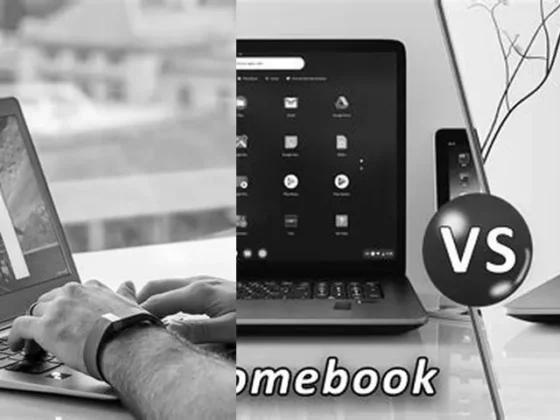Why Do Flags Appear on Respondus LockDown Browser? Unveiling the Causes and Solutions: Are you curious about what causes those pesky flags on Respondus LockDown Browser? Well, you’re not alone! Whether you’re an instructor or a student, understanding the triggers behind these flags can help you navigate this secure exam environment with ease. In this blog post, we’ll dive into the common causes of flags, shed light on Respondus Monitor’s flagged events, and offer some tips for both instructors and students. So, grab a cup of coffee and get ready to unravel the mysteries of Respondus LockDown Browser!
Understanding Respondus LockDown Browser and Automated Video Analysis
Respondus LockDown Browser is a custom browser that locks down the testing environment within learning management systems. When students take exams in this secured environment, it helps to prevent cheating by restricting their ability to access other websites, applications, or any other digital resources that might compromise the integrity of the examination process. A critical feature of Respondus is its Automated Video Analysis, which takes the security measures to the next level by monitoring the student’s behavior throughout the exam.
The Role of Automated Video Analysis in Monitoring Exams
Automated Video Analysis is the technology that powers the Respondus Monitor, which works in tandem with the LockDown Browser. During an exam, the student’s webcam records their movements and the environment to ensure that they remain within the exam’s guidelines. This technology is designed to flag any suspicious activities that could indicate potential cheating or academic dishonesty.
Common Triggers for Flags in Respondus LockDown Browser
Several behaviors can trigger flags in the Respondus LockDown Browser’s Automated Video Analysis. Understanding these triggers is essential for students to avoid accidental flags and for instructors to interpret the flags correctly.
Leaving the Computer
One of the most straightforward triggers for a flag is when a student leaves the computer during an exam. Since the system is designed to monitor the presence of the test-taker, any absence is automatically considered suspicious. Even if the departure is for a legitimate reason, it is likely to be flagged, and the student may need to explain the circumstances to the instructor.
Another Person Entering the Frame
If the webcam captures another person entering the screen, this is a significant concern as it could indicate that the student is receiving unauthorized assistance. The presence of another individual during the exam is almost always flagged, and instructors are alerted to review the situation.
Eyes and Head Movement
Where a student looks during an exam can also trigger flags. For instance, if a student’s eyes wander off-screen repeatedly or if they consistently look down, possibly at notes or a mobile device, it could be flagged as questionable behavior. Although looking down might be innocent—perhaps the student is working out a problem on paper—it’s still something that Automated Video Analysis may mark for review.
Respondus Monitor’s Flagged Events
Throughout an exam session, Respondus Monitor generates a list of events that have been flagged as potential problems. These flagged events are intended to help instructors identify moments that may require further investigation.
How Flagged Events Help Instructors
Instructors can review these flagged events to determine if any action is necessary. Not every flagged event will indicate cheating; some may be false positives or have reasonable explanations. However, this system allows instructors to focus their attention on specific moments during the exam that might warrant a second look.
What Students Should Know
Students using Respondus LockDown Browser should be aware of the system’s sensitivity to certain behaviors and take steps to minimize the chance of being flagged unnecessarily.
Tips for Avoiding Unnecessary Flags
- Ensure that you remain at your computer throughout the exam unless instructed otherwise.
- Before beginning the test, check your surroundings to ensure that no one else is likely to walk into the camera’s view.
- Try to keep your gaze directed at the screen as much as possible, and if you need to look away or down to work out a problem, do so sparingly.
- Communicate with your instructor about any potential issues you may face during the exam that could lead to being flagged.
Understanding the Limitations and Accommodations
Students should also understand that certain disabilities or learning accommodations may lead to behavior that could be flagged by the system. In these cases, it’s essential to communicate with the instructor before the exam to ensure that any necessary accommodations are made, and that such behaviors are not misinterpreted.
Best Practices for Instructors Using Respondus
Instructors who use Respondus LockDown Browser and Monitor should be familiar with how to interpret the flags and understand the context of each flagged event.
Reviewing Flags with Discretion
It’s important for instructors to review flagged events carefully and consider the student’s explanation. A flag does not necessarily mean that cheating has occurred; it simply means that the behavior deviated from the expected norm during the exam.
Communicating with Students
Clear communication with students about the Respondus LockDown Browser’s capabilities and what is considered suspicious behavior can help prevent unnecessary stress and confusion.
Conclusion: Balancing Security with Fairness
Respondus LockDown Browser and its Automated Video Analysis are powerful tools in upholding academic integrity. However, both students and instructors must understand the nuances of how behavior is monitored and flagged. By educating students on best practices and examining flagged events with a critical eye, educators can maintain a secure testing environment while ensuring that every student is treated fairly.
With the right approach, Respondus LockDown Browser continues to be an invaluable resource for educational institutions striving to create a level playing field for all students during examinations.
FAQ & Related Questions about Flags on Respondus Lockdown Browser
Q: What causes flags on Respondus LockDown Browser?
A: Flags on Respondus LockDown Browser are caused by automated video analysis that detects suspicious behavior during an exam, such as a student leaving the computer or a different person appearing in the webcam recording.
Q: What behavior triggers the flagging on Respondus LockDown Browser?
A: Any suspicious behavior, such as leaving the computer or having a different person appear in the webcam recording during an exam, will trigger the flagging on Respondus LockDown Browser.
Q: What do teachers see on Respondus LockDown?
A: On Respondus LockDown Browser, teachers have access to recordings of students with a webcam during the exam, along with automated flagging of events and other data.
Q: Do professors watch Respondus LockDown?
A: Professors do not actively watch students during the exam on Respondus LockDown Browser. However, the LockDown Browser is used to ensure exam integrity by preventing digital cheating and locking students into the online exam.
Q: Is a webcam required for Respondus LockDown Browser?
A: A webcam is not required for Respondus LockDown Browser. The browser itself prevents digital cheating by locking students into the online exam.


